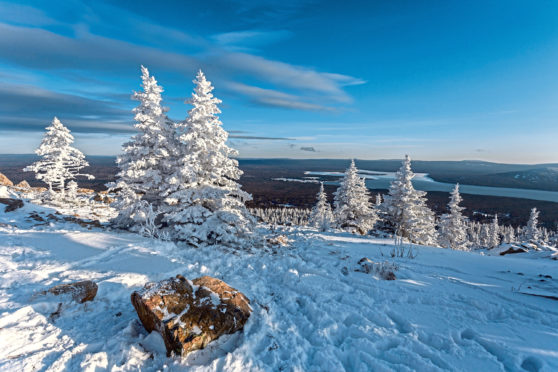
It’s the mystery that still has Russia baffled more than 60 years after it happened.
Just what did make nine experienced hikers apparently panic in the dead of night, rush out of their tents in a state of undress in the middle of a bitterly cold winter, and die of extreme violence?
The Dyatlov Pass Incident, as it’s known today, happened between February 1 and 2 1959, at the Dyatlov Pass in the Ural Mountains, the range that runs from Russia to Kazakhstan.
A team of nine very experienced hikers from the Ural Polytechnical Institute had set up camp on the east shoulder of Kholat Syakhl, the so-called Dead Mountain.
They were led by Igor Dyatlov, who the incident that followed is named after.
During the night, for reasons still unknown, the team seem to have panicked and torn themselves out of their tents before fleeing their campsite.
Wearing not nearly enough heavy clothing to protect themselves from sub-zero temperatures and very heavy snowfall, it’s clear that whatever scared them had been extremely terrifying.
Not surprisingly, when their bodies were eventually found half a dozen of them had died from hypothermia.
The other three, however, showed many signs of physical trauma, one having a fractured skull.
Two others had large, serious chest fractures, while one of them had lost both eyes.
An investigation, oddly, concluded they had died due to “compelling natural forces” but nothing about all this appeared to be natural at all.
Needless to say, the lingering mystery has led to one theory after another from experts, amateurs and those who only heard about the story recently.
Some reckon it must have been the result of a ferocious attack by an animal or animals.
For others, an avalanche must have been behind the hikers’ panic, but others still point to some kind of a cover up.
Maybe, they say, it all had some sort of military connection?
If the state didn’t want military operations to get out into the public domain, or was keen to cover up the fact that soldiers had been responsible for the team’s deaths, it would certainly have the power to cover it up.
Another theory involved infrasound-induced panic, again perhaps connected to something military.
Or, for those of a certain bent, thanks to extra-terrestrials.
Whatever the facts, and we will surely never know now, the Dyatlov Pass incident remains a huge mystery in a country full of enigma and secrecy.
Along with Dyatlov, the team consisted of Yuri Doroshenko, Lyudmila Dubinina, Georgiy Krivonischenko, Alexander Kolevatov, Zinaida Kolmogorova, Rustem Slobodin, Nikolai Thibeaux-Brignolles, Semyon Zolotaryov and Yuri Yudin.
Yudin had taken ill and left the expedition early, a twist of fate that saved his life.
It was found that Thibeaux-Brignolles’ skull was badly damaged, while Dubinina and Zolotaryov had chest fractures.
As experts reckoned these injuries would have required the same force as a car crash, the mystery deepened.
Dubinina was also missing her tongue, eyes, lips and facial tissue, which might suggest an animal attack.
Zolotaryov’s eyeballs were missing. Strangely, Kolevatov has his eyebrows missing.
It was thought these things happened after they were dead, and some believed the local indigenous people, the Mansi, might be behind all this horror.
This was ruled out after interrogations, and we may never know the truth.

Enjoy the convenience of having The Sunday Post delivered as a digital ePaper straight to your smartphone, tablet or computer.
Subscribe for only £5.49 a month and enjoy all the benefits of the printed paper as a digital replica.
Subscribe